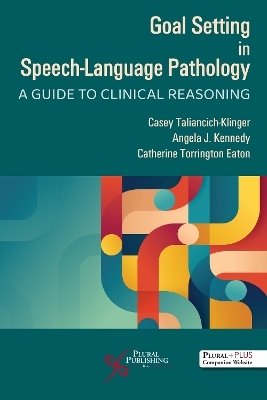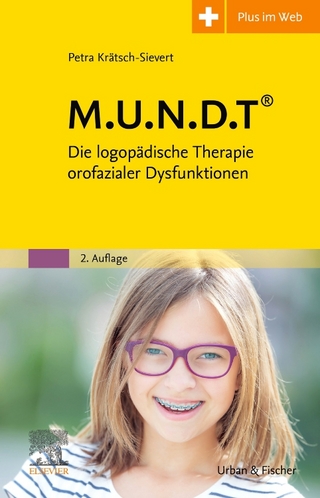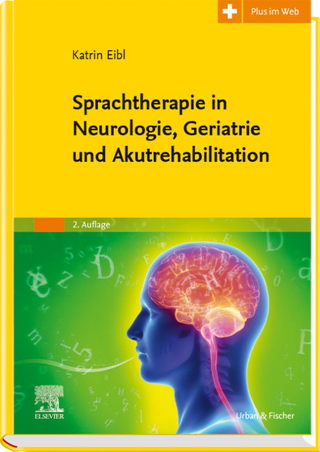
Goal Setting in Speech-Language Pathology
Plural Publishing Inc (Verlag)
978-1-63550-432-3 (ISBN)
Goal-Setting in Speech-Language Pathology: A Guide to Clinical Reasoning is the first textbook of its kind on evidence-based clinical decision-making for speech-language pathologists (SLPs). The goal of this text is to fill a pedagogical need for an efficient tool that teaches clinical reasoning to guide treatment planning. There are a number of existing resources in speech-language pathology that describe the how-to of writing goals, but not the clinical decision-making thought process behind the formulation of patient-centered goals. The text strives to address the knowledge gap in clinical learning environments across the scope of learners. Written for graduate-level students in clinical methods courses, it will also be an invaluable resource for novice SLP clinicians.
This functional, concise text for clinical coursework or practice explicitly defines the decision-making process used by experienced clinicians from referral to the creation of patient-centered goals. The contents include (1) the purpose for a decision-making framework grounded in both the science of learning and the American Speech-Language-Hearing Association's (ASHA) clinical competencies, (2) a description of data used in the clinical reasoning process, (3) presentation and discussion of the framework.
Key Features
Concise and readily accessible, making it easy to integrate into a single-semester course that only spends a few weeks on clinical decision-making
Serves as a practical how-to guide that uses systematic instruction with hands-on, real-world practice opportunities to teach students and young clinicians the application of clinical concepts
Includes dynamic in-text case studies
Written by authors with a wealth of clinical experience to cover a multitude of populations and settings, including culturally and linguistically diverse individuals
PluralPlus Online Ancillary Materials
For instructors: PowerPoint slides
For students: Video case studies and answer key for chapter 4.
Casey Taliancich-Klinger, PhD, CCC-SLP, is a bilingual speech-language pathologist, researcher, and Project Director. She holds a PhD in speech-language pathology from the University of Texas at Austin, where she also earned her MA in speech-language pathology, BA in Spanish, and BA in communica tion sciences and disorders. Dr. Taliancich-Klinger currently serves as an adjunct Assistant Professor in the Department of Communication Sciences and Disorders at UT Health San Antonio, and as a project director for Western Psychological Services. Her research focuses on language characteristics of Spanish-English bilingual children, multicultural issues, and graduate student learning. Together with a non-profit partner, Dr. Taliancich-Klinger codirects a community engagement pedi atric clinical experience for graduate students and is passionate about fostering inter-professional collaborations within the field of speech-language pathology and other health professions. **** Angela J. Kennedy, SLPD, CCC-SLP, is the Director of Clinical Education and an Assistant Professor for the Speech-Language Pathology program in the Department of Communication Sci ences and Disorders. She received her BA and MA in speech-language pathology from the University of North Texas and completed her clinical doctorate in speech-language pathology from Northwestern University. She has over 15 years of clinical experience in pediatric speech-language pathology in a variety of clinical settings including school-based, pediatric outpatient, home health, and university-based settings. Her current areas of research interest include increasing access to rehabilitative services for pediatric patients with communication disorders in under-resourced areas, examining the training and equipping of speech-language pathologists specifically in the area of speech sound disorders, and the implementation of interprofessional clinically based activities in graduate-level curriculums. **** Catherine Torrington Eaton, PhD, CCC-SLP, is an Assistant Professor in the Department of Communication Sciences and Disorders at the University of Texas Health Science Center in San Antonio, Texas. She has worked as a speech-language patholo gist in various medical and education settings, but her clinical specialty is aphasia. Her primary research interests include func tional language use in patients with post-stroke and primary progressive aphasia as well as communication partner training for healthcare providers. Dr. Eaton teaches graduate courses in neuroanatomy and neurophysiology, clinical methods, and neurogenic language disorders, and she loves the challenge of clinical supervision.
Introduction
About the Authors
Acknowledgements
Reviewers
Chapter 1. Clinical Reasoning Introduction
The Value-Add
A Useful Analogy
An Introductory Case Study
A Novice Clinician’s Response
An Experienced Clinician’s Response
Terminology in Clinical Reasoning
Prototypes
Logic
Clinician Factors
Setting Factors
Patient Factors
Clinical Reasoning
Goal Concept
Treatment Goals
Conclusion
Chapter 2 Goal Framework
Key Questions
Who Are They?
Medical Information
Developmental Information
Educational Information
Language Experience
What Is Their Current Communication and Swallowing Status?
Diagnostic Assessments
Diagnostic Decisions
What Is Important to Them?
Environment
Interests/Life Events
Patient and Family Priorities
Conclusion
Chapter 3. Clinical Application Guide
Drumroll Please
Goal-Writing Framework
Diagnostic Decision
Goal Planning
Synthesis
Connection
Treatment Goals
Case Example 1: Theo
Who Are They?
What Is Their Current Communication and Swallowing Status?
What Is Important to Them?
Goal Planning
Synthesis
Connection
Treatment Goals
Case Example 2: Jayden
Who Are They?
What Is Their Current Communication and Swallowing Status?
What Is Important to Them?
Goal Planning
Synthesis
Connection
Treatment Goals
Conclusion
Chapter 4. Case Studies for Practice
Introduction
Adult Medical
Dysphagia: Julia
Aphasia: Elisabeth
Traumatic Brain Injury: Samuel
Parkinson’s Disease: Tomas
Pediatric Medical
Fluency: Roshan
Speech Sound Disorder: Phonological
Feeding and Swallowing: Grady
Craniofacial Syndrome: Sloane
Education
Developmental Language Disorder: Carla
Developmental Language Disorder – Early Childhood
Speech Sound Disorder: Mei Ling
Developmental Language Disorder: Daniel
Conclusion
Appendix 1
Appendix 2
Appendix 3
Appendix 4
References
Index
| Erscheinungsdatum | 14.11.2023 |
|---|---|
| Verlagsort | San Diego |
| Sprache | englisch |
| Maße | 152 x 229 mm |
| Themenwelt | Medizin / Pharmazie ► Gesundheitsfachberufe ► Logopädie |
| ISBN-10 | 1-63550-432-5 / 1635504325 |
| ISBN-13 | 978-1-63550-432-3 / 9781635504323 |
| Zustand | Neuware |
| Haben Sie eine Frage zum Produkt? |
aus dem Bereich


